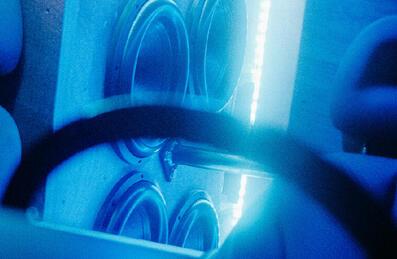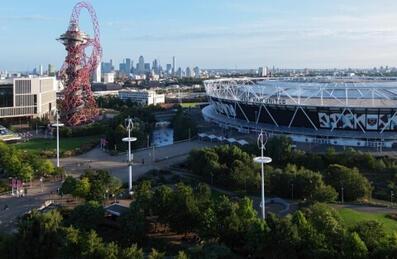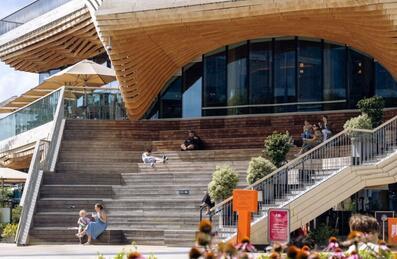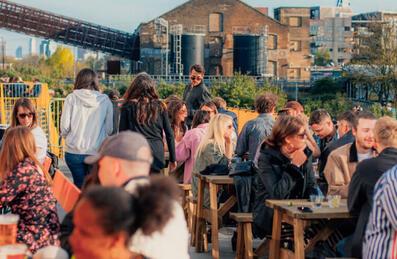
Popular Searches:
Keep up to date
Sign up today for exclusive offers and incredible experiences you won’t want to miss at Queen Elizabeth Olympic Park.
Sign up nowThe Bow Back River
The recorded history of the rivers dates back to Alfred the Great and the invasion of the Danes when the River Lea was the border between England and Danelaw. It is recorded that Alfred the Great trapped the Danes’ ships in 896AD by draining the lower Lee, forcing the invaders to flee on horseback.
1900-1990 Prosperity to decline
The waterways played a major role during the Industrial Revolution in providing water to local industry, particularly in powering mills at Three Mills and City Mills.
In the early 1930s, major investment was injected into the Bow Back Rivers to improve their ability to accommodate both floodwaters and navigation, however by the mid-20th century the waterways had largely fallen into disuse with the decline in both canal freight carrying and waterside industries.
By the 1990s, the Bow Back Rivers were heavily silted and largely unnavigable with derelict and unusable structures. It wasn’t until the decision was made in 2005 to award London the 2012 Olympic and Paralympic Games that the area’s fortunes began to turn around.
2005-2012 A new lease of life
Between 2005 and 2012, more than £50m of investment was made by various Government agencies to transform the waterways of the Lower Lea Valley. Work included:
- Refurbishing an abandoned lock on City Mill River
- Rebuilding waterway walls and towpaths
- Dredging deeper channels for commercial and leisure traffic
- Creating new wildlife habitats for birds and insects
- Installing infrastructure for trip boats and establishing better, safer connections for walking and cycling
On 27 July 2012, the revitalised waterways were given their moment on the global stage as David Beckham raced down Waterworks River on board a speed boat to hand over the Olympic Torch as part of the Games Opening Ceremony. The scene marked the culmination of a remarkable journey undertaken by the Bow Back Rivers over the past 100 years, one which is set to continue to develop alongside Queen Elizabeth Olympic Park itself.
A bright future ahead
London Legacy Development Corporation and Canal & River Trust are working together to secure a lasting legacy for the waterways of Queen Elizabeth Olympic Park.
The long-term aim of the regeneration project is to ensure the waterways can host boating and leisure activities and once again form a living legacy for London’s people and wildlife, forming the backbone for a world class water city.
Carpenters Road Lock
One of the key pieces of the waterways regeneration programme is the restoration of Carpenters Road Lock in the south of the Park. Construction work began on the Lock in 2016 and was completed in summer 2017. Now restored, the Lock will provide the opportunity for boaters to navigate a full route around the Park, taking in the stunning route from the Old River Lea to the Waterworks River.
Over the course of the project, cameras have captured the remarkable transformation of Carpenters Road Lock. You can view timelapse footage of the transformation project below.









